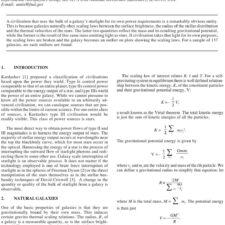Interstellar Predation
£5.00
C. S. Cockell; M. Lee (2002), JBIS, 55, 8-20
Refcode: 2002.55.8
Keywords: Predation, photosynthesis, evolution, mixotrophy, chiral, SETI, Fermi paradox
Abstract:
Although chemosynthesis and photosynthesis can theoretically supply enough energy for intelligence, for reasons elucidated here, heterotrophy and specifically phagotrophy (ingestion of prey) are likely to make predation a characteristic of life and extraterrestrial intelligence (ETI). Here, the Earth’s biota is used to consider the nature of interstellar predation. The ability of the ETI to directly ingest a biota will be determined by the chiral preference of the ETI, the compatibility of the biochemistry used in life on Earth with the molecules required by the ETI and the potential toxicity of the macromolecules. If chirality is determined by astrophysical factors and not by the specificities of terrestrial origins of life and if molecules found in terrestrial organisms are also represented in ETIs (which could plausibly include hydrated carbohydrides and many amino acids that are similar or identical to amino acids found in meteoritic or cometary material) then the Earth might represent a universally appreciated resource. The Earth’s biota could be used as an energy supply or, if other forms of technology have advanced to the point where bioreactors can be exclusively used to supply a civilization with food, as a culinary curiosity. Even in the absence of metabolic compatibility, technology can be used to extract useful products from an undigestible biota, similarly to the industrial biotransformation of cellulose. The value of the resource will also be determined by the availability of prey. Planets at stages in biological evolution where the surface is dominated by just one or several large (>5kg), abundant, easily captured organisms are particularly attractive to predators because harvesting techniques can be standardized. We discuss implications for exobiology and the `Fermi Paradox’.





